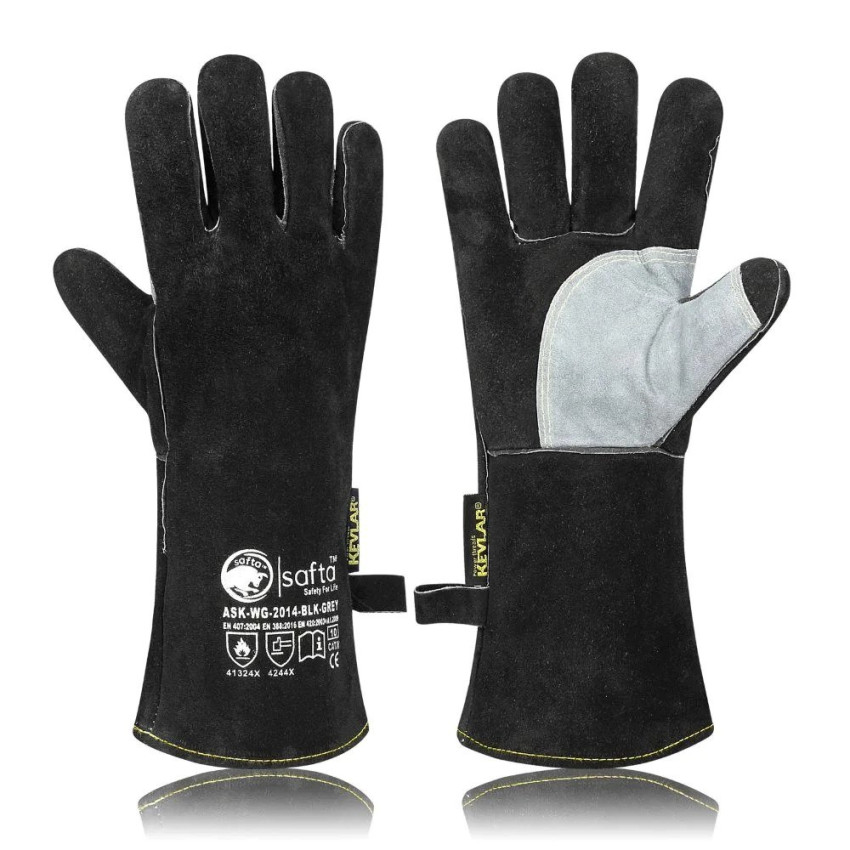
In the fast-paced world of today, where safety is paramount, one often overlooked aspect is the importance of choosing the right heat resistant gloves. Whether you're working in a professional kitchen, engaging in DIY projects at home, or dealing with industrial processes, the right gloves can make a significant difference in safeguarding your hands. This comprehensive guide will walk you through the critical factors to consider when selecting heat-resistant gloves for both domestic and professional use.
Understanding the Importance of Heat-Resistant Gloves
Why Heat Resistance Matters
Heat-resistant gloves are not just a luxury; they are a necessity. They protect your hands from burns, scalds, and other injuries that can occur when exposed to high temperatures. Whether you're handling hot cookware, working with machinery, or involved in activities that generate heat, having the right gloves can prevent accidents and ensure your safety.
Types of Heat-Resistant Gloves
Leather Gloves
Overview: Leather gloves are a traditional choice known for their durability and heat resistance.
Applications: Ideal for welding, grilling, and heavy-duty industrial work.
Key Features: Thick, insulating material provides excellent protection against heat.
Kevlar Gloves
Overview: Kevlar gloves are lightweight yet incredibly strong, offering heat resistance without compromising dexterity.
Applications: Perfect for tasks requiring precision, such as glass handling or laboratory work.
Key Features: High tensile strength and resistance to abrasions make them suitable for various applications.
Nomex Gloves
Overview: Nomex gloves are often used in environments where both heat and flame resistance are critical.
Applications: Commonly found in the firefighting and aerospace industries.
Key Features: Maintains flexibility and protection even in extreme temperatures.
Factors to Consider When Choosing Heat-Resistant Gloves
Temperature Resistance
The ability of gloves to withstand specific temperature ranges is crucial. Always check the temperature rating to ensure the gloves are suitable for the tasks you undertake. Gloves that offer protection against extreme heat are essential for activities such as metalworking or firefighting.
Material Composition
Different materials offer varying levels of protection. Leather is a classic choice, while modern materials like Kevlar and Nomex provide advanced features such as flame resistance. Consider the specific requirements of your work environment when selecting the material of your gloves.
Fit and Comfort
An often underestimated aspect is the comfort of the gloves. Ill-fitting gloves can hinder dexterity and increase the risk of accidents. Look for gloves with ergonomic designs and adjustable features to ensure a snug yet comfortable fit.
Durability and Longevity
Investing in high-quality gloves is a long-term investment in your safety. Check for reinforced seams, double stitching, and additional protective layers to ensure the gloves can withstand the rigors of your work environment.
Conclusion
Selecting the right heat-resistant gloves is not just about complying with safety regulations; it's about prioritizing your well-being. Whether you're a professional chef, a DIY enthusiast, or an industrial worker, the gloves you choose can significantly impact your safety and performance. Consider the specific needs of your tasks, evaluate temperature resistance, material composition, fit, and durability, and make an informed decision. Remember, investing in quality gloves is investing in your safety and the efficiency of your work.




